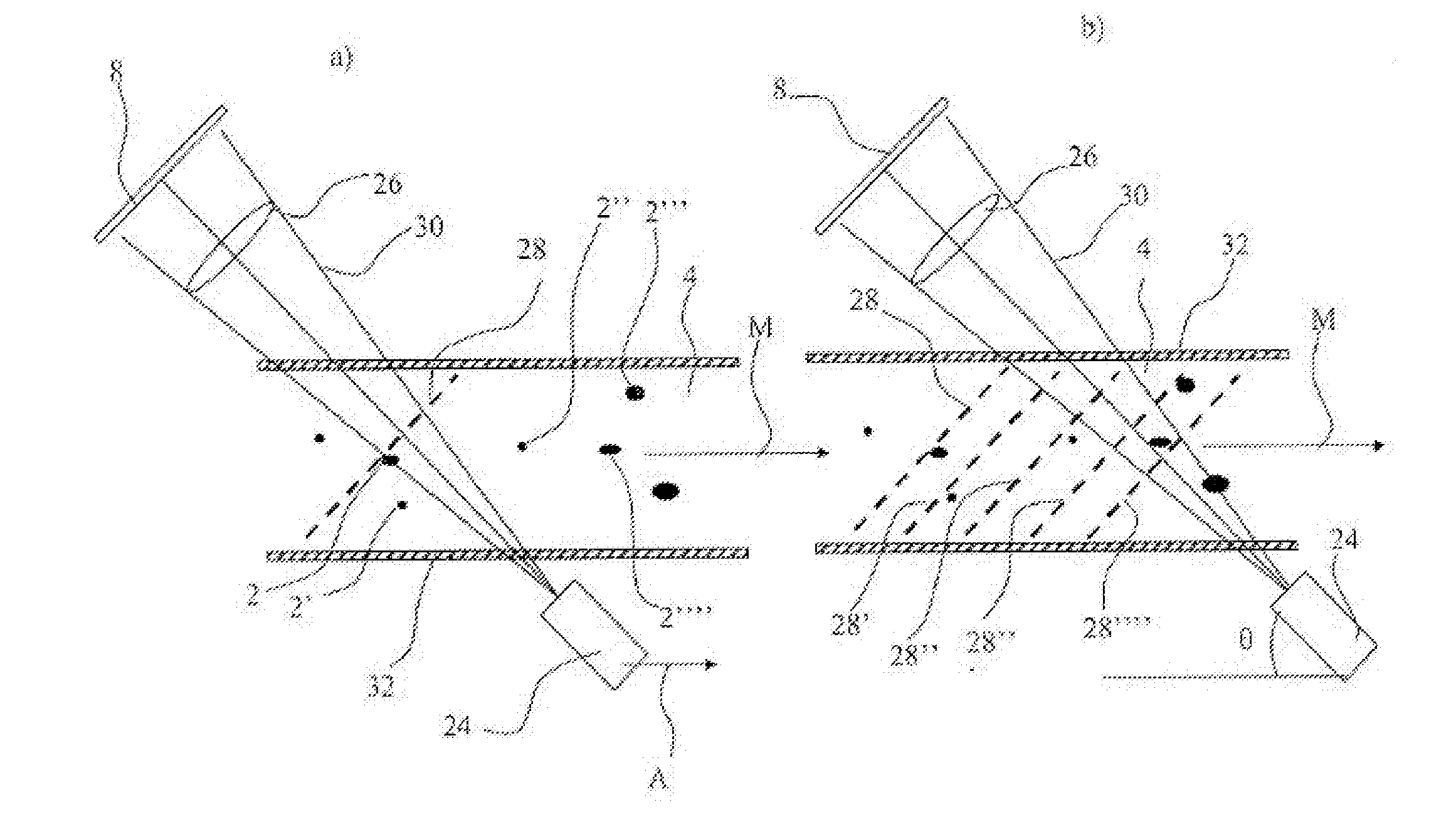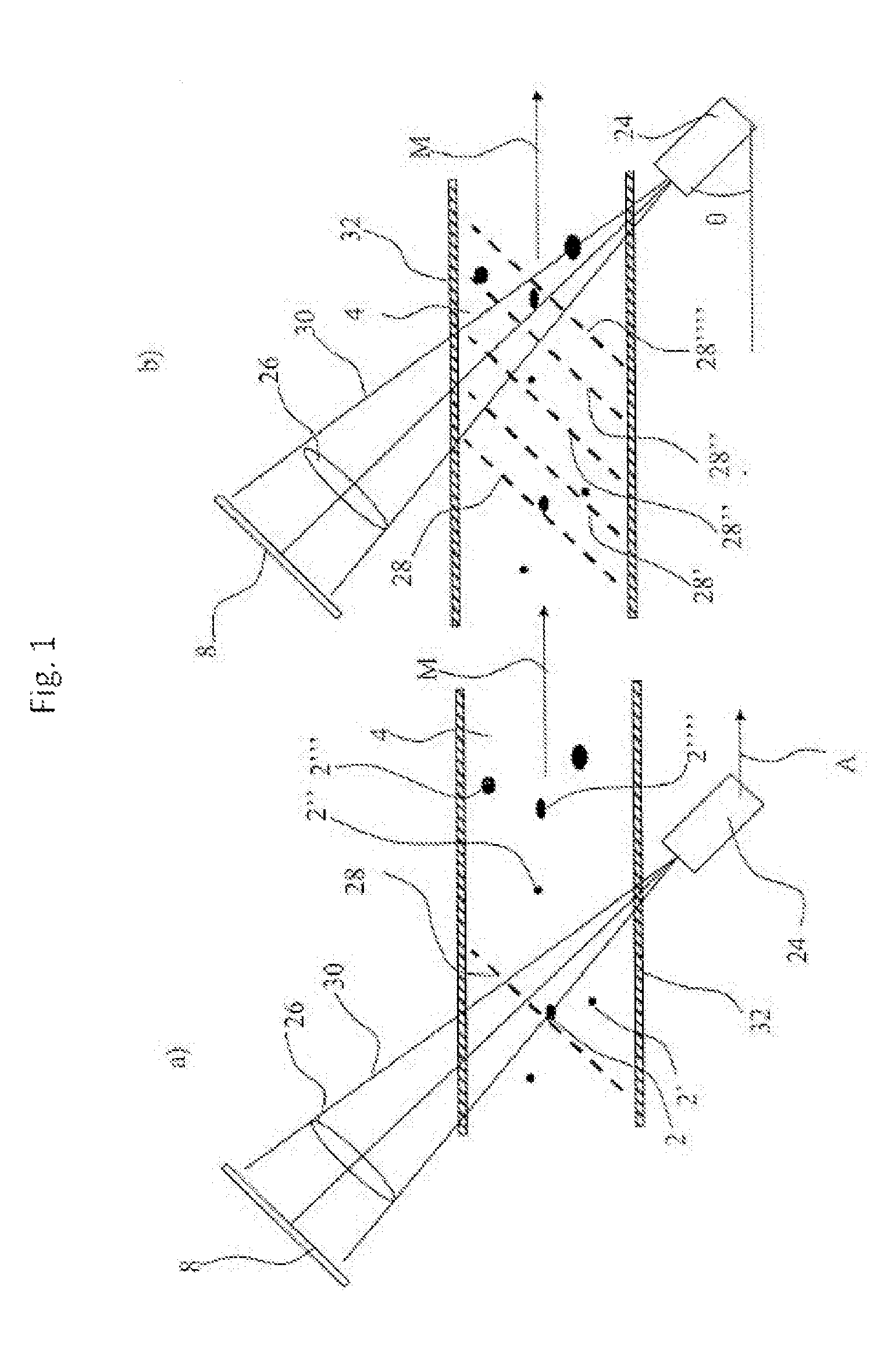System and method for classification of particles in a fluid sample
a fluid sample and particle technology, applied in the field of particle classifier systems, can solve the problems of difficult to precisely classify particles and time-consuming, and achieve the effect of simple and reliable, fast and simpl
- Summary
- Abstract
- Description
- Claims
- Application Information
AI Technical Summary
Benefits of technology
Problems solved by technology
Method used
Image
Examples
example 1
Example: Viability of Yeast Cells
[0236]In this example a method of classifying yeast cells using a particle classifier system as described above is described. The yeast cells are classified as either “dead” or “alive”.
[0237]A liquid sample comprising a plurality of yeast cells were analyzed using the particle classifier described above and a plurality of stack of objects were obtained, each stack comprising at least one in-focus and two out-of focus objects.
[0238]In FIG. 5 the objects of a stack of a yeast cell is shown. In the upper left corner the object is negatively defocused. The objects are aligned in an order of left to right, row after row. Following the order of the objects it can be seen that the focus F gradually increases and finally arrives at perfect focus (in-focus object), denoted by an arrow and framed with a fat line. The following objects are gradually defocused (positively defocus). In this way the complete focus behavior of a single yeast cell can be viewed in o...
example 2
Using Ensemble Features to Classify Particles:
[0244]In a sample of monoculture yeast cells of unknown size or shape, we want to classify each cell according to the stage of spawning. It is assumed that all cells are in a spawning state where they are either alone (not spawning), two cells connected (spawning with a single offspring), or multiple objects connected (higher level of spawning). After segmentation, stack generation and feature calculation, the size distribution of the particles will show peaks around multiples of a single cell size, i.e. peaks around 1 unit size, 2 unit sizes, etc. It is clear that the area corresponding to the lowest peak corresponds to the size of a single cell, which was unknown up to this point. All particles in the ensemble can now be classified according to the peak in the distribution they are closest to, i.e. particles closest to the lowest peak are not spawning, and particles closer to the second peak are classified as single offspring cells
PUM
 Login to View More
Login to View More Abstract
Description
Claims
Application Information
 Login to View More
Login to View More - R&D
- Intellectual Property
- Life Sciences
- Materials
- Tech Scout
- Unparalleled Data Quality
- Higher Quality Content
- 60% Fewer Hallucinations
Browse by: Latest US Patents, China's latest patents, Technical Efficacy Thesaurus, Application Domain, Technology Topic, Popular Technical Reports.
© 2025 PatSnap. All rights reserved.Legal|Privacy policy|Modern Slavery Act Transparency Statement|Sitemap|About US| Contact US: help@patsnap.com



